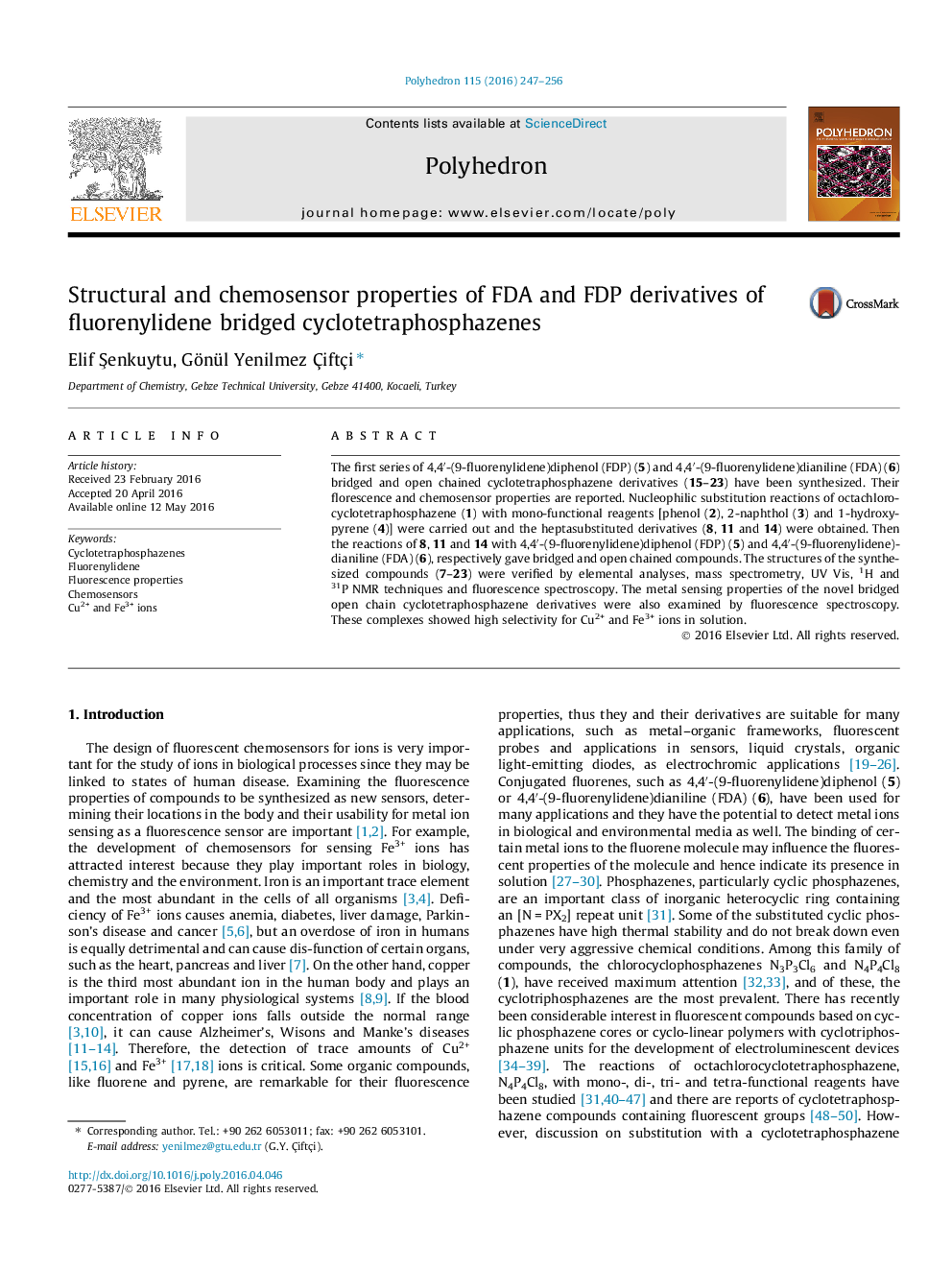| Article ID | Journal | Published Year | Pages | File Type |
|---|---|---|---|---|
| 1336344 | Polyhedron | 2016 | 10 Pages |
The first series of 4,4′-(9-fluorenylidene)diphenol (FDP) (5) and 4,4′-(9-fluorenylidene)dianiline (FDA) (6) bridged and open chained cyclotetraphosphazene derivatives (15–23) have been synthesized. Their florescence and chemosensor properties are reported. Nucleophilic substitution reactions of octachlorocyclotetraphosphazene (1) with mono-functional reagents [phenol (2), 2-naphthol (3) and 1-hydroxypyrene (4)] were carried out and the heptasubstituted derivatives (8, 11 and 14) were obtained. Then the reactions of 8, 11 and 14 with 4,4′-(9-fluorenylidene)diphenol (FDP) (5) and 4,4′-(9-fluorenylidene)dianiline (FDA) (6), respectively gave bridged and open chained compounds. The structures of the synthesized compounds (7–23) were verified by elemental analyses, mass spectrometry, UV Vis, 1H and 31P NMR techniques and fluorescence spectroscopy. The metal sensing properties of the novel bridged open chain cyclotetraphosphazene derivatives were also examined by fluorescence spectroscopy. These complexes showed high selectivity for Cu2+ and Fe3+ ions in solution.
Graphical abstractThe first series of 4,4′-(9-fluorenylidene)diphenol (FDP) (5) and 4,4′-(9-fluorenylidene)dianiline (FDA) (6) bridged and open chained cyclotetraphosphazene derivatives (15–23) were synthesized. Their florescence and chemosensors properties are reported. Nucleophilic substitution reactions of octachlorocyclotetraphosphazene (1) with mono-functional reagents [phenol (2), 2-naphthol (3) and 1-hydroxypyrene (4)] were carried out and the heptasubstituted derivatives (8, 11 and 14) were obtained. The reactions of 8, 11 and 14 with 4,4′-(9-fluorenylidene)diphenol (FDP) (5) and 4,4′-(9-fluorenylidene)dianiline (FDA) (6) respectively gave bridged and open chained compounds. The structures of compounds (7–23) were verified by elemental analyses, mass spectrometry, UV Vis, 1H and 31P NMR techniques and fluorescence spectroscopy. The metal sensing properties of the novel bridged and open chain cyclotetraphosphazene derivatives were also examined by fluorescence spectroscopy. These complexes showed high selectivity for Cu2+ and Fe3+ ions in solution.Figure optionsDownload full-size imageDownload as PowerPoint slide
